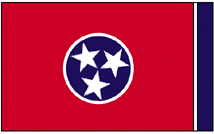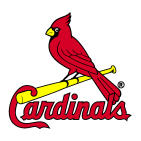[« This says something about the economics profession....] [The Cost-Benefits of it All... »]
09/21/2005: NASA Trivia Quiz Answers...
Well, Surprise, Surprise -- Jim was *Partly Correct* and *Partly Incorrect* on his answers ("I'll make my answers easy to grade. All false.")
Hahahahahahaha.
It came from outer space: Chances are, there are things you use every day that originated from NASA: by William Weir (Chicago Tribune newspapers - The Hartford Courant) gave me the quiz idea from his piece:"From safer sports to easier housework, there seems no end to how the technology of space-bound journeys has translated into earthly benefits.
So much space technology has spun off into everyday conveniences that NASA has its own magazine, Spinoff, devoted to the subject…”
So, click on the "more" button to see the True or False answers.
:-)
NASA is responsible for the following technological inventions:
1) Air Filtration Systems.
True: Air purification: You don't colonize other planets without looking into the quality of their atmospheres. NASA's research into such has led to a better understanding of how certain plants absorb gases and reduce pollution. This led to a carbon/plant filter system that removes chemicals, smokes and other toxins from the air. It has been commercialized and used in office buildings.
2) Tang.
False: General Foods came up with it in the 1950s. Astronauts drank it in outer space, a fact that the company played up in its ads.
3) Velcro. False: Swiss inventor George de Mestral came up with the idea after going for a walk with his dog and coming back covered with cockleburs. After studying the pesky weeds under a microscope, he developed the useful hook-and-loop material. NASA simply made good use of Velcro for many of its projects.
4) Skiing Boots.
True: The same design that gives astronauts flexibility as they make their way around lunar surfaces also allows skiers to navigate the slopes with precision. And the foot-warming technology installed in Apollo astronauts' boots has made its way to skiers.
5) Black and Decker Cordless tools.
True: In 1971, NASA enlisted Black & Decker for a cordless, battery-operated tool to remove samples from the moon 10 inches below the surface. Then came cordless drills, Dustbusters, hedge trimmers and grass cutters as staples for Father's Day.
6) Gravity Pens.
True: Space pens: Conventional pens rely on gravity to bring ink to the writing point. But Fisher Space Pen uses ink cartridges pressurized with nitrogen that don't need gravity. The pens were brought aboard the 1968 Apollo 7 mission, replacing the pencils astronauts had used on previous missions.
7) Autoclaved Aerated Concrete.
False: Autoclaved aerated concrete (AAC) was developed in Europe in 1923. Commercial production of the material began in 1930. In 1995, more than 31 million cubic meters were produced by over 50 factories worldwide. And only in the past 5 years it has been introduced to the U.S. market by two important European construction companies (HEBEL and YTONG). AAC is used in a wide range of building construction with residential, commercial and industrial buildings being common applications. The system consists of small masonry-like units, larger "jumbo" units, panels, and a variety of specially manufactured shapes and pre-assembled wall sections. The walls, floors and roof of a building can be constructed with the system. Using one material to build the entire structural and insulation part of a building offers many advantages, allowing excellent design flexibility, quick construction and reduced waste.
8) Helmet pads for football, baseball and bicycling.
True: Helmets and pads for football, baseball and bicycling have come out of NASA brainpower.
9) Invisible braces for teeth.
True: NASA's search for tough ceramic material for spacecraft and aircraft led to this orthodontic breakthrough. Scientists developed material strong enough to wrangle teeth into place while being barely detectable.
10) Converting Urine into Water.
Semi-True: NASA is developing a system to convert urine to drinking water. In a recent Wired magazine, NASA officials say supplying the International Space Station with potable water has cost $60 million. Turn urine into water, they say, and you reduce the need for water delivery by two-thirds. And benefits abound for Earthlings. NASA officials say the system could be life-saving for the approximately 1 billion who live in regions with limited drinking water.
11) Zen perfume.
True: Perfume: International Flavors & Fragrances harvested roses aboard the space shuttle Discovery in 1998, which were developed into a perfume by Shiseido called Zen. In the cut-throat fragrance industry, novelty is everything. Weightlessness affects the development of vegetation in ways still not fully understood, so the thinking goes, and produces unworldly aromas.
12) Graphite guitars.
True: Drawing from aerospace technology, Kaman Corp. of Bloomfield, Conn., has developed a guitar made from graphite. It's designed for optimum sustainability and durability. The heavy-metal band Judas Priest used the guitar on its most recent album.
13) PC and Computer Joy sticks.
True: It's possible that slackers, too, have benefited from space research. Or not. NASA Web site--www.nasa.gov--states that the video-game controller evolved from the construction of the Apollo Lunar Rover. But others say it was developed by pilots in the early 20th Century.
14) SIMs games.
False: EA Games is responsible for the creation of The SIMs and its many spin-offs, but the technology has been adapted for war game simulations by the military.
15) Teflon.
False: Thank DuPont, which brought out the non-stick material in 1938.
16) Smoke Detectors.
True: Smoke detector: It was developed in the 1970s by Honeywell for Skylab, the first U.S. space station. Selling it in the civilian world has gone particularly well: Every building is required by law to have one
17) Fogless Ski Goggles.
True: When scientists at NASA's Johnson Space Center in Houston looked into how to keep spacecraft windows clear before launch, they also came up with the means to make fogless ski goggles.
18) Silver laced bedding, blankets and clothing.
Semi-True: As I posted about Space-Li-Ness is Next to…; This concept is in the testing stages at NASA and may become the smell free clothes of the future. But thye are responsible for some clothing; the Johnson Space Center developed enhanced thermal insulated clothing, which has become a hit with skiers.
19) Foam Insulation for Housing.
False: Insulating, spray-in-place polyurethane foam. This type of material has been used for years in thermos bottles, refrigerators, commercial freezers and coolers, Some companies developed ways that polyurethane can be used effectively in the insulation of homes and commercial buildings. There are also patents for Insulation bonding test system; a method and a system for testing the bonding of foam insulation attached to metal.
20) Radiant Heated Flooring.
False: Hydronic radiant heating systems, using wrought iron and steel piping, originated in the early 1900's. During the 1940's and 50's, many radiant floor systems incorporating copper tubing in concrete slabs found widespread application. Though crude by today's standards, these systems proved they could deliver unsurpassed comfort. What changed the situation was the development of a new tubing made from cross-linked polyethylene (PEX). First used in Europe, then brought to North America in the early 1980's, these PEX systems proved once and for all that hydronic heating could deliver superior comfort, along with ease of installation and long service life.
Karen on 09.21.05 @ 12:24 PM CST










